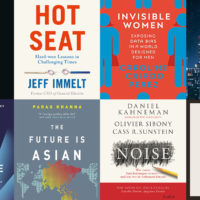And what about subsidies?
Subsidies are not a panacea, and less so for the developing world. Developing countries don’t have enough money to subsidize their way out of problems anyway, and even for the richest ones “the subsidy war is ruinously expensive,” said Elms.
“Instead of picking winners in a specific sector – which may or may not work – how about focusing on broader-based issues like education? If we have a better-educated workforce (an STI objective) and a sustainable environment in which people are not succumbing to pollution, then we have a healthier population able to work. Those kinds of policies might be harder to pinpoint but can make a big difference.”
The Index can help identify more broad-based goals like this. “In the middle of the Index, there are some developing economies that are highly ranked and some richer economies that you might not expect to be so far down on the ranking. They can find out the right set of alignment for their own circumstances, wherever they are on the development scale,” Elms added.
China provides an interesting playground for discussing the subsidy merry-go-rounds. “There, you have to decide sector by sector on their viability,” said Evenett.
“I think of Chinese industrial policy as a tournament between the provinces and cities for who can build the best firms. Eventually, the Chinese allow a small amount of firms to go forward and the others get culled. It’s a tournament that anyone can show up to, but don’t think that just because you got in you are going to survive more than five or 10 years. There has to be a disciplined process for withdrawing subsidies and that’s the exit point that I mentioned earlier – the fourth of the big lessons.”
YouTube








